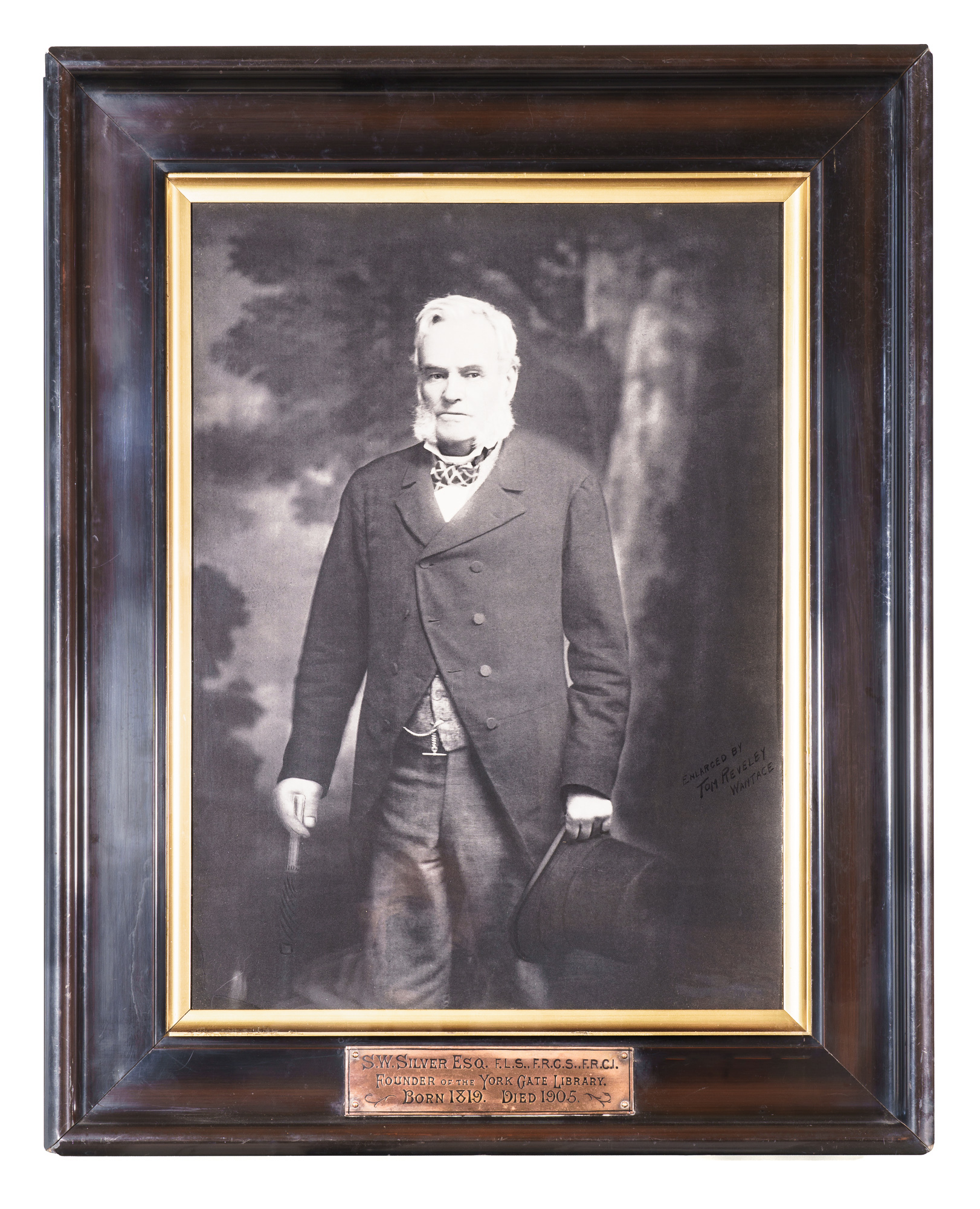In 2008 the RGSSA commissioned a Significance Assessment Report of the York Gate Library and the Gill Library. These are two main components of the RGSSA library. This report was completed in 2009 by library specialist Susan Marsden. The following descriptions - modified slightly here - of the York Gate Library are taken from that report.
The renowned York Gate Library purchased in 1905 is part of the RGSSA Library. The York Gate Library is an impressive collection in its own right (over 7,500 titles, 15,000 volumes), as well as the most valuable in dollar terms. The treasures include for example, the oldest cartographic work, and the oldest book in the RGSSA Library, several early atlases, the collections of voyages published by Johann Theodor de Bry, an original diary journal kept by Sir Joseph Banks (later botanist with James Cook) on his first voyage, to Newfoundland (1766), and John Lewin’s hand-coloured Birds of New Holland
(1808), the first book solely on Australian birds, surviving in only six copies. There are 50 items included in the Society’s Terra Cognita centenary exhibition catalogue (large atlases had to be excluded because of space limitations); and many items have been chosen for national and state exhibitions, including by the National Library of Australia and the National Gallery of Australia. The York Gate copy of the very rare Arnold Colom’s Zee-atlas, showing the earth’s sea coasts (1658), was included in the national touring exhibition, ‘National Treasures from Australia’s Great Libraries’.
This rich collection of books and manuscripts also relates to many aspects of southern hemisphere and Pacific exploration, geography and culture, and contains original explorers' accounts, British colonial histories, rare maps and atlases and scientific periodicals.
The collection contains a wide range of Australiana in particular, as a result of William Silver’s keen interest in those colonies, reinforced by E A Petherick who catalogued the York Gate Library (refer to the other RGSSA Treasure "The Catalogue of the York Gate Library and its compiler Edward August Petherick"). In addition to having the well-known accounts of voyages by Cook, Flinders, Peron and Freycinet (most of which are first editions), the library has many rare volumes with early descriptions of Australia, such as the Dutch account of Francois Pelsaert's tragic voyage of the Batavia, wrecked off western Australia in 1629.
William Silver's collection had two types of book plates, one for the books housed at 3 York Gate on the southern periphery of Regents Park in London and another for those kept at his country house 'The Benhams', in Letcombe near Wantage in Berkshire. These book plates are more in the nature of labels; they are confined to an address (without the owner's name), topped by an ornate 'S'.
In addition to a book plate, most of Silver's books were also embossed in gold on the front cover and/or the spine with a design consisting of a small globe over a banner containing the words ‘York Gate Library’. The second edition of the York Gate catalogue, published in 1886, noted that ‘during the last four years [since the first edition] the accessions to the Library have been very numerous, and advantage was taken of the opportunities afforded by the William Beckford, the 10th Duke of Hamilton, Ellis and Michael Wodhull sales, to secure some of their typographical treasures and rarities’. Petherick thanked the booksellers Bernard Alexander Christian Quaritch and Frederick Startridge Ellis for these acquisitions. (the Silvers of S.W. Silver and C/- - Chris Durrant)
